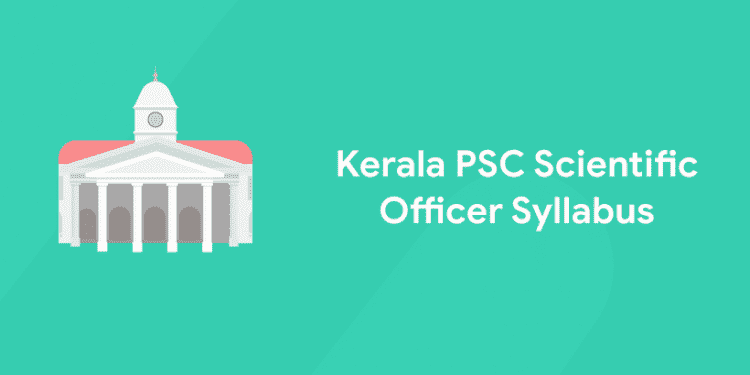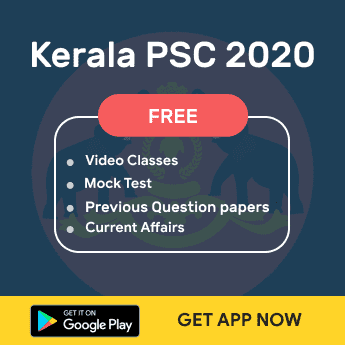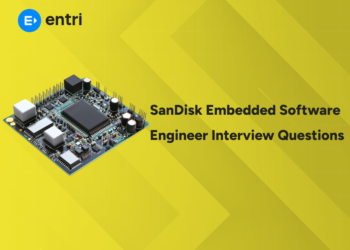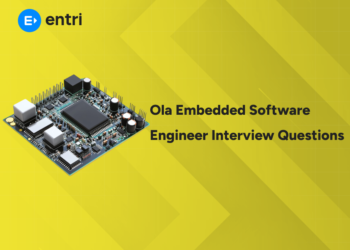Kerala Public Service Commission will invite applications from eligible candidates to the post of Kerala PSC Scientific Officer 2020. Interested candidates can apply for the post through official website of Kerala PSC. There will be a written examination as the part of recruitment and selection process. The syllabus of the exam is already published. In this article the Kerala PSC Scientific Officer Syllabus is discussed and PDF is also provided.

Kerala PSC Scientific Officer Syllabus
Under Kerala PSC Scientific Officer, there are three sections like Physics, Chemistry and Biology. The Scientific Officers will be recruited in the Kerala Police Service – Forensic Science Laboratory. The detailed syllabus of each post is given below:
Kerala PSC Scientific Officer Syllabus Physics (Category Number: 026/2020)
1. Classical Mechanics
Constraints and Generalized coordinates, D’Alemberts principle and Lagrange’s equation, Velocity dependent potentials, Hamilton’s Principle, Lagrange’s equation from Hamilton’s Principle, Kepler problem, Hamilton -Jacobi equation, Hamilton’s principal and characteristic function, H-J equation for the linear harmonic oscillator, Euler angles, Centrifugal and Coriolis forces, Nonlinear oscillations, Limitcycles, Chaos – Logistic map.
2. Mathematical methods and group theory
Properties of Fourier series, Fourier integral, Fourier transform, Gamma function, Beta function, Delta function, Bessel functions of the first and second kinds, Neumann function, Spherical Bessel function, Legendre polynomials, Generating function, Recurrence relation, Rodrigues formula, Orthogonality, Associated Legendre polynomials, Spherical harmonics, Hermite polynomials, Laguerre polynomials, Cauchy-Reimann conditions, Cauchy’s integral theorem and integral formula, Laurent expansion, Singularities, Calculus of residues and applications.
3. Electronics
Biasing of Field effect Transistor (FET), FET as VVR and its applications, Photodetectors – Light dependent resistor- photodiode, p-n junction solar cells, Basic operational amplifier characteristics, differential amplifier, OPAMP parameters, OPAMP as inverter, Analog integration and differentiation, Electronic analog computation, Active low pass filter, High pass Butterworth filters, Band pass filter, OPAMP based astable and monostable multivibrators, Schmidt trigger. Amplitude modulation and demodulation circuits, Comparison of signal to noise ratios, Pulse code modulation, Communications receivers, FM transmitters, VHF/UHF systems, Microwave systems , Satellite communications.
4. Quantum Mechanics
Vector spaces, The Hilbert space, Operators and its properties, Angular momentum operators, Matrix representation of angular momentum operators, Pauli spin matrices, Orbital angular momentum, differential and total cross – section, optical theorem, Harmonic perturbation, Interaction of an atom with the electromagnetic field, Induced emission and absorption, Anharmonic oscillator, stark and Zeeman effects in hydrogen, Hole theory, The Weyl equation. The Klein-Gordon equation, Charge and current densities.
Start your exam preparation on Entri with Kerala PSC Scientific Officer Syllabus!
5. Statistical mechanics
The entropy of mixing and Gibbs paradox – Phase space of a classical system – Liouville’s theorem and its consequences, Equipartition theorem – Virial theorem – The density matrix, Thermodynamic behaviour of an ideal Bose gas, Thermodynamic behaviour of an ideal Fermi gas- Magnetic behaviour of an ideal Fermi Gas : Pauli paramagnetism, Landau diamagnetism.
6. Nuclear and particle Physics
Nuclear size, shape, mass and binding energy, semi empirical mass formula Characteristics of nuclear forces, spin – orbit potential, electric quadruple moments, parity violation in beta decay, internal conversion. Conservation laws and symmetries, Quark model, The eightfold way, quantum chromodynamics and gluons. Fick’s law and its validity, Shell structure and magic numbers, Single crystal and Powder diffraction, Scherrer equation, Debye-Scherrer Camera, Applications of XRD.
7. Solid State Physics
Miller indices, Reciprocal lattice, Brillouin zones, Einstein and Debye models of specific heat, Nearly free electron model and formation of energy bands, Bloch functions, Kronig Penny model, Dielectric constant, Local Electric field, Ferroelectric domain, Antiferroelectricity, Piezoelectricity, Langevin‟s theory of diamagnetism, Weiss theory of ferromagnetism, Neel Model of Antiferromagnetism, Type I and Type II superconductors, energy gap Isotope effect, London equation, Cooper pairs, High Tc Superconductors, Cuprates.
8. Atomic and molecular Spectroscopy
The spectrum of non rigid rotator, Born –Oppenheimer approximation, Normal modes and vibration of H2O and CO2, Rotational Raman Spectrum of Symmetric top molecules, stimulated Raman effect and Inverse Raman Effect. Vibrational Analysis of band systems, Deslander’s table, Interaction of nuclear spin and magnetic field, Larmour precession, Mossbauer Spectroscopy, Resonance fluroscence of γ-rays.
9. Microprocessor
Organization of microcomputers, microprocessor as CPU, Addition, Subtraction of two 8 bit & 16 bit numbers, Organization and internal architecture of the Intel 8085,Timings of Intel 8085, Data transfer schemes of Intel 8085, Applications of Microprocessors, Analog to Digital converter, Clock for A/D conversion, Sample and Hold circuit, Analog multiplexer and Overview of 8051 microcontroller.
10. Lasers and Fibre Optics
Einstein coefficients, Line-broadening mechanisms, Q-Switching, Mode locking, Four level solid state lasers, CO2 lasers, Dye lasers, Semiconductor lasers, Spatial frequency filtering and holography, Second Harmonic Generation. Acceptance angle of Optical Fibre, Numerical aperture of optical fibre, Step-index fibers, Graded index fibers. Attenuation in optical fibers, Absorption losses, Leaky modes, Radiation induced losses, Inherent defect losses.
Syllabus of Scientific Officer Physics
Syllabus of Scientific Officer Chemistry (Category Number: 027/2020)
Module 1: Inorganic Chemistry 1
Structure and bonding in molecules- Chemical periodicity- Chemistry of Hydrogen and s block elements- Chemistry of p block elements and d block elements- Extractive chemistry of various metals of commercial importance- Chemistry of Nontransition elements like Glass Theories of acids and bases- HSAB concept- solvent effects, linear free energy relationship – mechanism and methods of determination, super acids – Reactions in Non-aqueous solvents Protic and Aprotic solvents- Chemistry of Isopoly and Heteropoly acid, etc.
Module 2: Inorganic Chemistry 2
Construction of energy level diagrams. Correlation diagram. Method of descending symmetry. Term symbols; Correlation diagrams for dn and d10 ions in octahedral and tetrahedral fields ; Orgel and Tanabe-Sugano diagrams. Symmetry and Selection rules for electronic spectra, IR and Raman Theory of Electronic, IR, NMR, ESR and Mossbaur spectra of complexes. Different aspects of magnetic properties of complexes and their determination.
Mossbauer Spectroscopy: Application of the technique to the studies of iron and tin complexes Nomenclature, synthesis, structure, properties and bonding of organo-metallic compounds – metal carbonyls and cyanides – Complexes with linear π donor ligands: Olefins, acetylenes, dienes and allyl complexes. Complexes with cyclic π donors: Cyclopentadiene, benzene complexes. Structure and bonding of ferrocene and dibenzenechromium complexes – Metal – Metal bonds and metal atom clusters. Essential and trace metal elements in biological systems.
Module 3: Inorganic Chemistry 3
Nuclear reactions – structure and stability- Magic numbers – Detailed study of different nuclear models- radio active equilibria and equations of radioactive decay and growth – Nuclear reactions: Direct nuclear reactions, heavy ion induced nuclear reactions, photonuclear reactions. Neutron captures cross section and critical size -Applications of nuclear reactions- fission and fusion; neutron activation analysis – counting techniques. Solid State Chemistry: Crystal symmetry- Point groups and space groups. Miller indices and Bravais Lattices- Close packed structures: BCC, FCC and HCP. Voids. Coordination number. X-ray diffraction by crystals: Applications and calculations using Bragg’s equation and indexing methods. Different types of Crystal defects and consequences Electronic structure of solids. Different theories about conductors, insulators and semiconductors and their applications. Doping and band gap adjustments. AX, AX2, AmX2, ABX3, Spinels and Inverse spinel structures. Structure and theories of Liquids- Liquid crystals and their applications. Temperature dependence of conductivity, carrier density and carrier mobility in semiconductors – Superconductivity, Photoconductivity Photovoltaic effect. Colour in inorganic solids. Dielectric properties. Dielectric materials. Ferroelectricity, pyroelectricity, piezoelectricity and ionic conductivity. Applications of ferro, piezo and pyroelectrics, etc.
Module 4: Organic Chemistry 1
Nomenclature of organic compounds – Cyclic, fused polycyclic and bridged polycyclic hydrocarbons, bridged and fused hydrocarbon systems, Spirocyclic hydrocarbon systems, Heterocyclic systems containing Nitrogen and Oxygen. Molecular symmetry and chirality, axial chirality, planar chirality and helicity, relative configuration, stereochemical nomenclature, R and S, E and Z. Stereo chemistry of biphenyl and allenes – Topicity and prostereo isomerism -asymmetric synthesis. Axial stereochemistry: atropisomerism and its designation – biphenyls, allenes, spiranes- M and P configurations. Stereoselectivity: enantioselectivity, diastereoselectivity & stereoconvergence. Stereospecific and stereoselective synthesis. stereotopicity & stereoprojections. Prochiral centre and prochiral faces – Pro R and Pro S, Re face and Si face, Importance of prochirality in biological systems. Geometrical isomerism, Conformational analysis in acyclic and cyclic systems , Application of Cram’s rule, Felkin–Ahn model Basic concepts of Organic reactions – Electron displacement effects –Aromaticity and antiaromaticity. Non aromatic, homoaromatic, hetero and non–benzenoid aromatic systems. Aromaticity of annulenes, mesoionic compounds, metallocenes, cyclic carbocations and carbanions, etc.
Module 5: Organic Chemistry 2
Mechanism with evidence of Wagner – Meerwein, Pinacol, Demjanov, Hofmann, Curtius, Schmidt, Lossen, Beckmann, Fries, Hofmann–Martius, Dienone–phenol, Benzilic acid, Benzidine, Favorskii, Stevens and Wolf rearrangement.
Oxidation and Reduction reactions in organic synthesis- Reduction using boranes, hindered boranes and derivatives- NaBH4, and LiAlH4, DIBAL-H, tri-n-butyltin hydride, diimide, and aluminium alkoxide. Birch reduction, Clemmensen reduction and Wolff – Kishner reduction, Huang – Minlon modification, Rosenmund reduction – allylic and benzylic oxidation, Sharpless epoxidation, oxidation using SeO2, manganese (IV) oxide, lead tetraacetate, ozone, peracids, DDQ, silver carbonate and Cr(VI) reagents. Jones oxidation, Swern oxidation, Moffatt oxidation, Sommelet reaction. Applications of HIO4, OsO4 and mCPBA Linear Free Energy Relations, etc.
Use of various organic, inorganic and organometallic reagents in organic synthesis Grignard reagents, Alkyl lithiums, Lithium Dialkylcuprates, Alkynyl copper reagents, Tebbe reagent etc. Use of various protecting groups in peptide synthesis. Phase transfer catalysis and its applications.
Module 6: Organic Chemistry 3
Photochemical processes. Singlet and triplet states and their reactivity, Jablonski diagram, Energy transfer, sensitization and quenching. Photoreactions of carbonyl compounds, enes, dienes and arenes. Patterno-Buchi and Barton reactions, Hofmann- Löffler- Freytag reaction, photo-Fries and Di-π methane, di- π methane rearrangements. Applications of photochemistry. Classification of pericyclic reactions, FMO, Correlation diagram, Mobius and Huckel theory of electrocyclic and cyclo addition reactions- Stereo and region selectivity and industrial applications of Diels Alder reaction, 1,3–Dipolar cycloaddition and Sigmatropic rearrangements
Chemistry of Natural Products : Terpenes, steroids, alakaloids, carbohydrates, proteins, nucleic acids, vitamins, prostoglandins, hormones and enzymes, etc.
Module 7: Physical Chemistry 1
Gaseous State- Maxwell’s distribution and equation- Transport phenomena- Chapman equation- Equations of state of real gases- vander Waals, Virial and other equations- Inter molecular forces and consequences, etc.
Module 8: Physical Chemistry 2
The gas-solid interphase, types of adsorption. Monolayer and multilayer adsorption – Adsorption Isotherms Heat of adsorption and its determination – Adsorption from solutions -Determination of surface area of solids-Harkins–Jura absolute method, point B method, Langmuir method and BET method-Principles of LEED, SEM, TEM, ECSA, Photoelectron spectroscopy, scanning probe microscopy, Auger electron spectroscopy, etc.
Module 9: Physical Chemistry 3
Classical mechanics and its limitations –need of quantum mechanics, de Broglie relation and its experimental proof, uncertainty principle and its consequences- Formulation of Quantum Mechanics – Postulates of quantum mechanics- Application of Quantum mechanics to Exactly Solvable Model Problems- Translational motion- Quantum mechanical tunnelling- Vibrational motion- and Rotational motion –SHO, Rigid Rotor- Legendre polynomials and associated Legendre functions Approximation Methods and Chemical Bonding – Hydrogen like Atoms -Multi Electron Systems, etc.
Module 10: Analytical, Environmental, Material and Supramolecular chemistry
Evaluation of analytical data, Accuracy and precision. Standard deviation, variance and coefficient of variation. Student ‘t’ test, ‘Q’ test, and ‘F’ test. Confidence limits- Errors and their minimisation- Significant figures-Correlation analysis- Calculation of R by method of least squares, etc.
SYLLABUS OF SCIENTIFIC OFFICER Chemistry
Syllabus of Scientific Officer Biology (Category Number: 025/2020)
Zoology
- Systematics, Animal Diversity, Ethology, Evolution and Zoogeography
- Research Methodology and Biostatistics
- Biophysics and Instrumentation
- Biochemistry, Physiology and Immunology
- Cell Biology, Molecular Biology and Bioinformatics
- Developmental Biology and Genetics
- Ecology, Biodiversity Conservation
- Microbiology and Biotechnology
- Economic Zoology, Entomology, Fisheries, Wildlife Biology and Human Genetics
- Recent Developments in Zoology
Botany
- Phycology
- Mycology
- Plant Pathology
- Bryology
- Pteridology
- Gymnosperms
- Microbiology
- Paleobotany
- Angiosperm Anatomy
- Microtechnique
- Embryology
- Palynology
- Plant Breeding
- Evolution
- Taxonomy
- Morphology
- Economic Botany
- Ethnobotany
- Phytogeography
- Forest Botany
- Environmental Biology
- Cell and Molecular Biology
- Genetics
- Plant Physiology
- Biochemistry
- Biophysics
- Biostatistics
- Biotechnology
- Bioinformatics
sYLLABUS OF SCIENTIFIC OFFICER biology
All candidates can download the full fledged Kerala PSC Scientific Officer Syllabus from the links provided. Download Entri app and start your exam preparation. Entri wishes good luck to all candidates.











